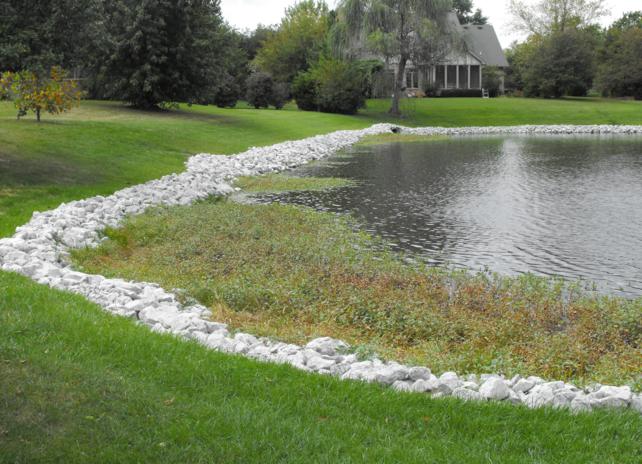Controlling Aquatic Weeds
Controlling aquatic leads isn’t only about appearance. Certainly, aquatic weeds distract from the beauty of any body of water, but they can also render the water feature unusable and adversely affect the biosphere. Yes, aquatic weeds can significantly impact the health of marine ecosystems. These plants can grow quickly and cover large water areas, leading to negative consequences.
Controlling Aquatic Weeds
One of the most significant impacts of aquatic weeds is the reduction of oxygen levels in the water. As these plants grow and die, they consume oxygen from the water, which can lead to oxygen depletion and harm fish and other aquatic organisms. Additionally, aquatic weeds can block sunlight, preventing the growth of beneficial algae and other plants that provide oxygen to the water.
Aquatic weeds can also impact water quality by trapping sediment and other pollutants in their roots and leaves. This can lead to the accumulation of nutrients like phosphorus and nitrogen, which can cause harmful algal blooms and other water quality issues.
More Impacts
In addition to these environmental impacts, aquatic weeds can have economic and recreational impacts. For example, they can clog waterways, making navigating difficult and impacting fishing and other recreational activities. They can also affect the value of waterfront properties and increase costs associated with maintaining water infrastructure. Overall, it is important to manage aquatic weeds to protect aquatic ecosystems’ health and the many benefits they provide.
Some of the Most Prevalent Species
- Coontail – This native plant is found in ponds and slow-moving streams. It forms a dense mat on the water’s surface, harming native aquatic plants.
- Common Waterweed – This plant can quickly multiply and form dense mats, leading to similar negative impacts as Coontail.
- Hydrilla – This invasive species grows in lakes and slow-moving rivers. It also can form dense mats on the water’s surface, even interfering with recreational activities.
- Duckweed – This floating plant can provide habitat for wildlife. However, it can also spread quickly and cover large areas of water, impacting water quality.
- Watermeal – This tiny floating plant may not seem like a significant threat, but surprisingly it to can form dense mats, leading to similar negative impacts as other invasive species.
- Cattail — How to Remove Cattails Before They Take Over Your Pond
What Berger Hargis Does to Control Aquatic Weeds
Depending on the type, amount, and distribution of aquatic weeds in your aquatic area, we use a combination of removal and chemicals. The chemical we use to control aquatic weeds is Rodeo and Reward.
“Rodeo” and “Reward” are brand names for herbicides containing glyphosate. Glyphosate is a broad-spectrum herbicide commonly used to control the growth of unwanted plants, including aquatic weeds.
Keep in mind it may take multiple visits to eliminate pond weeds.
How Can We Help You?
Berger Hargis has a company philosophy of providing personal excellence for all our services. Our growth and success have been due entirely to our commitment to honest, excellent customer service. The company has been built on the referral business we have received due to this philosophy.
We work with residential customers and businesses in Central Indiana. Contact Us for a free analysis from one of our trained specialists.
About the Author
Randy Clark is a speaker, coach, and author. He publishes a weekly blog at Randy Clark Leadership.com. Randy is passionate about social media, leadership development, and flower gardening. He’s a beer geek, and on weekends he can be found fronting the Rock & Roll band Under the Radar. He’s the proud father of two educators; he has four amazing grandchildren and a wife who dedicates her time to helping others. Randy is the author of the Amazon bestseller The New Manager’s Workbook, a crash course in effective management.
Go Back







